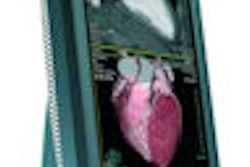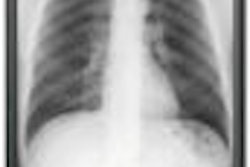A California firm is making waves with a new business model that could replace traditional radiology groups with a nationwide imaging services provider that contracts directly with hospitals. Does the rise of Imaging Advantage portend a new era of radiologists as hired help?
Imaging Advantage is a privately held radiology management firm founded in 2006 that has nationwide ambitions for what it calls a "hybrid" model for the practice of diagnostic imaging. The Santa Monica, CA, company employs radiologists to work directly within hospital radiology departments, while many sophisticated services such as advanced visualization, overnight on-call teleradiology, and subspecialty interpretations are outsourced to other firms.
— Naseer-Uddin Hashim,
president and CEO,
Imaging Advantage
But some radiologists see the firm's ambitions as a threat to their longstanding independence as owner-operators of radiology groups. One of the firm's most recent deals, with an Ohio hospital, has created a firestorm of controversy as some radiologists have risen to the defense of the group that Imaging Advantage replaced.
Resource allocation
The president and CEO of Imaging Advantage, Naseer-Uddin Hashim, comes to radiology with experience in outsourcing medical transcription and legal services. He approaches imaging services not as a matter of local relationships within a community, but rather as a question of the proper allocation of local and remote resources.
"I believe we need to start moving away from a static model of radiology -- thinking that the scope of services available in a local community is limited to those available locally," Hashim said. "It's a new business model, like an Amazon or an eBay, and that always seems to generate interest."
With approximately 30 employees and a dozen customers in 10 states, Imaging Advantage provides "turnkey radiology solutions" to hospitals. These include not only staffing, teleradiology, PACS, and 3D services, but also range into operational performance. "We also manage performance and take responsibility for delivering a certain outcome that has a direct benefit to patient care," Hashim said.
The company names partnerships or close relationships with staffing firms (Jackson Healthcare, LocumTenens.com) and teleradiology firms (NightHawk Radiology Services of Coeur d'Alene, ID) that enable it to extract higher levels of service than most hospitals or radiology practices can from these vendors, according to Hashim.
Finally, the feather in its cap is a contract with Massachusetts General Hospital (MGH) of Boston with respect to 3D teleradiology interpretation. Imaging Advantage in November 2008 launched its Tele3D Advantage division, which allows data from high-resolution modality scanners to be rendered remotely using protocols developed by MGH's 3D Imaging Service. In this fashion, Imaging Advantage claims that its clients can add CT angiography services to their offerings, making them more competitive and benefiting patient care and throughput.
Two issues rankle radiologists, however. For one, Imaging Advantage's reliance on teleradiology -- even during daylight hours -- goes beyond the "gentlemen's agreement" between teleradiology providers and radiology groups that has mostly limited teleradiology interpretations to areas that do not compete with the local group, such as overnight and subspecialty reads.
More important, however, is the company's desire to replace the traditional standalone radiology practice with an employment contract and a business-focused management team. Many radiologists see this business model as the beginning of the end of radiology's traditional independence, and the start down a slippery slope that ends in radiologists simply being employees at hospitals or imaging services firms.
In response, Imaging Advantage touts the flexibility of its model and its ability to divide full-time equivalent (FTE) employees between local hospitals and its nationwide network, if needed. It also offers radiologists with whom it contracts the opportunity to earn supplemental income by doing off-hour teleradiology reads via workstations installed in their homes.
"I can allow you to go home and read five CT exams a day at home. You could make an additional $30,000 to $40,000 a year, typically, doing 30 to 40 studies a week. Ninety percent of our doctors do it, and it's completely free to them," Hashim said.
The Toledo controversy
Although the firm has been in operation for three years, it began generating a buzz last month following the signing of a contentious contract that went into effect June 8 with Mercy Health Partners (MHP) in Toledo, OH. MHP comprises three hospitals, including one, St. Vincent Mercy Medical Center, that operates a level I trauma center.
The Imaging Advantage deal replaced a decades-long relationship that Mercy had with the local radiology group, Consulting Radiologists (CRC), which was terminated with only several weeks' notice, according to CRC president Dr. David Cervantes. Imaging Advantage offered CRC radiologists 30-day contracts paying $1,900 per day for diagnostic and $2,100 for interventional radiology services.
Imaging Advantage said it also offered the CRC radiologists longer-term contracts, but as a stipulation of the offer, it required CRC to shut down its freestanding imaging center and stop servicing a competing hospital by July 5. None of the 19 CRC doctors took the offer; two retired (as previously planned), two took sabbatical, and two relocated.
The dispute quickly took on a life of its own in a thread in the AuntMinnie.com Forums that has generated more than 2,000 individual posts and more than 90,000 page views since May 20. Cervantes admits he launched the thread, asking for background on Imaging Advantage and eventually revealing the details of the disagreements between Imaging Advantage, MHP, and CRC.
— Dr. David Cervantes, president,
Consulting Radiologists
The debate has taken a number of twists, turns, and tangents, and even saw the publication of an open letter that Hashim sent to the American College of Radiology (ACR) of Reston, VA, laying out its case. The ACR declined to comment to AuntMinnie.com for this story.
Arguments as to what was behind Mercy's desire to change radiology "service providers" abound, but much boils down to radiology report turnaround time, according to both Imaging Advantage and MHP.
An internal June 25 letter to clinical staff by MHP president and CEO Dr. Imran Andrabi explains that prior to Imaging Advantage taking over the hospital's radiology contract, "Turnaround time for interpretations completed within 24 hours increased to 71% during the week of June 8. Total volumes have remained steady."
Further, "To achieve enhanced turnaround time and workflow management as well as use of subspecialty doctors, Imaging Advantage has increased the number of onsite radiologists and also uses a sophisticated final read teleradiology model."
Describing Imaging Advantage's use of NightHawk Radiology, Andrabi reiterates, "All remote reads in the new program are now final reads." The letter emphasizes that all teleradiology doctors are located in the U.S., are vetted by Imaging Advantage, and are board-certified, state-licensed, and hospital-privileged.
But Cervantes disputes that turnaround times were a major source of problems between CRC and Mercy.
"This turnaround time thing is the biggest red herring in the world," Cervantes said. "When we were there, we used [Virtual Radiologic (VRC)] teleradiology midnight to 7 a.m. at two of the three hospitals. The third had residents. With teleradiology services you really don't know what you're going to get, so we had a policy for VRC to only provide prelims. We also kept track of it as part of our quality control. On a busy night, maybe 20 studies got sent. I refuse to believe that having to double-read those studies was overly time-consuming."
Cervantes claims turnaround was well within ACR guidelines, although he admits that CRC's involvement in teaching residents from the University of Toledo "slowed things down a little bit -- but to me, it seems worthwhile."
The residents won't be slowing things down for now, however -- some CRC staff were also teaching faculty, and so the University of Toledo has removed its radiology residents from Mercy hospitals. In its letter to the ACR, Hashim writes "the termination of the resident education program was effected by CRC. The residents were removed from the department, before our contract started and against our will. Of course, we will work to re-establish the resident program."
And how much of a selling point is Imaging Advantage's ability to get 3D renderings from MGH? Cervantes scoffs: "Every radiologist knows that 3D imaging isn't that important. You make them to impress the medical staff, or for television interviews. I myself was doing all the CT angiographies at St. Charles [a Mercy hospital]. The 3D system at St. Vincent's was completely inadequate -- they did not even have a 64-slice scanner until a few months ago. On the old 16-slice scanner, the [3D] system would crash."
Changing radiology
Although Cervantes and colleagues have succeeded in drawing attention to CRC's plight, his goal is not to regain the Mercy contract, but to emphasize the unique nature of the radiology profession. "We are more than just factory workers," he said.
Hashim, too, said that he understands that a radiologist does more than just read films. There are patient interaction, education, and clinical leadership issues that Imaging Advantage says it supports.
When asked, however, if radiologists invited this hybrid business model -- and its potential for competition -- into their world by using teleradiology services, he pauses. "That's an interesting question. Radiologists have used teleradiology for nights, for when they're sick, for when they're on vacation. I didn't start the first teleradiology company. About eight years ago, these very large, publicly traded companies came on the scene -- NightHawk, VRC, Templeton. I am not the one making the market. Nobody controls the market and innovation -- it just happens," Hashim said.
"I'm often asked whether Imaging Advantage is going to make community radiologists irrelevant," he continued. "My answer is unequivocally that no, this is exactly the opposite of what Imaging Advantage is doing. We are committed to enabling radiologists in communities large and small to provide the very best patient care possible. We partner with local radiologists."
Hashim said that at more than 50% of its sites, the company was invited in by the local group to become its partner and to provide it with services that enable it to better serve its patients.
But Cervantes doubts Imaging Advantage can make good on any of its promises to hire new, permanent staff at MHP: "We know how hard it is to recruit to northwest Ohio," he said. "It's an industrial city. We were able to do it based on the strength of our group."
Ultimately, patient care and physician referrals are the measures Cervantes will watch to see if MHP's choice proves effective. He's already noted questionable clinical skills, he said, among the locums tenens radiologists that are filling in at MHP. His point of view is hardly impartial, however. Nor is his vehement rejection of the employment model as a new approach to managing radiologists.
"It's always been the rule that radiologists run their practices," Cervantes said. "I think you get better quality from that model. If they're employed by the hospital and they get their salary no matter what, there's no motivation. Being a part of a private practice gives you better incentive. Otherwise, you're just a factory worker."
By Alexandra Weber Morales
AuntMinnie.com contributing writer
July 9, 2009
Related Reading
Imaging Advantage wins Ohio contract, June 11, 2009
Copyright © 2009 AuntMinnie.com



















